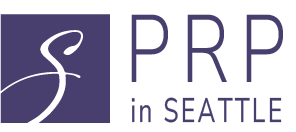In the quest for a non-invasive procedure, Platelet-Rich Plasma (PRP) therapy tops the list. It has become a popular treatment for injuries, chronic pain, and even aesthetic rejuvenation. The procedure involves using a concentrated solution of…
Every aspiring esthetician has a wish to do PRP as it is one of the most popular treatments for skin rejuvenation. PRP is not only effective in cosmetic requirements but also proven useful in medical conditions…
Whether you need a cosmetic enhancement or medical treatment for joint pain and sports injuries, PRP injections provide immediate and effective results. In the quest for searching for a natural treatment, PRP injections tops the list.…
For medical and cosmetic issues, PRP comes as an effective solution. It is not only effective but considered safe too. Why is it so safe? Because it uses the patient's own blood, which is processed to…
Platelet-rich plasma (PRP) injections, commonly known as “P-Shot” were initially used in sports medicine but their scope has widened over time, and today, these are being used in men’s health clinics for their possible benefits in…
Platelet-Rich Plasma (PRP) therapy is under spotlight as it is a minimally invasive option for individuals seeking enhancement of their buttocks without undergoing surgery. While this innovative technique offers several benefits, such as improved skin texture…
Is stress giving you under-eye shadows that won’t quit? Don’t worry as platelet-Rich Plasma (PRP) therapy is there to beat the stubborn dark circles and fine lines under the eye to give you a more rejuvenated…
PRP (Platelet-Rich Plasma) therapy is a minimally invasive treatment for hair loss. If you’ve undergone PRP injections for hair restoration, you may be wondering how soon you can get back to your regular activities—especially exercise. To…
If you want to get rid of those wrinkles on the face or are looking for a solution for hair loss, one name is in the spotlight: PRP injections. Yes, surprisingly PRP injections can cater to…
Platelet-rich plasma (PRP) therapy may be a good choice if you’re looking for a natural way to rejuvenate your skin, encourage hair growth, and address signs of aging. This therapy can provide incredible benefits for your…
